The HTC One M9 Review: Part 1
by Joshua Ho on March 22, 2015 7:00 PM EST- Posted in
- Smartphones
- HTC
- Qualcomm
- Mobile
- Snapdragon 810
- One M9
Display
By now, it generally goes without saying that a high end smartphone needs to have an amazing display. However, defining what an amazing display is can often be quite difficult. We can all agree that a display should get as bright as possible and that black pixels should be as dark as possible, but some characteristics are often subject to personal biases. Something as simple as white point can divisive because some people prefer warmer colors, but others prefer a colder color balance. Color in general can be a subjective preference, as some prefer wide color gamuts and saturation compression to achieve a vivid look, but others prefer more muted and subtle colors.
However, despite subjective preference we have to all have a common standard for color rendition. After all, if pink on one screen looks like magenta on another, this could easily result in a number of problems when sharing content. Something as simple as taking a photo can be difficult with an inaccurate display, as white balance on a photo could easily appear to be incorrect for a scene even if it isn’t. As a result, in addition to judging simple characteristics such as brightness and contrast, we also test how well a display matches against the sRGB color standard with a gamma target of 2.2. In order to do this, we use our usual test suite which includes X-Rite’s i1Pro2 for accurate color and brightness measurements, along with X-Rite’s i1Display Pro for accurate contrast measurements. In order to fully utilize this hardware, we use SpectraCal’s CalMAN 5 Ultimate with a custom workflow for mobile devices.

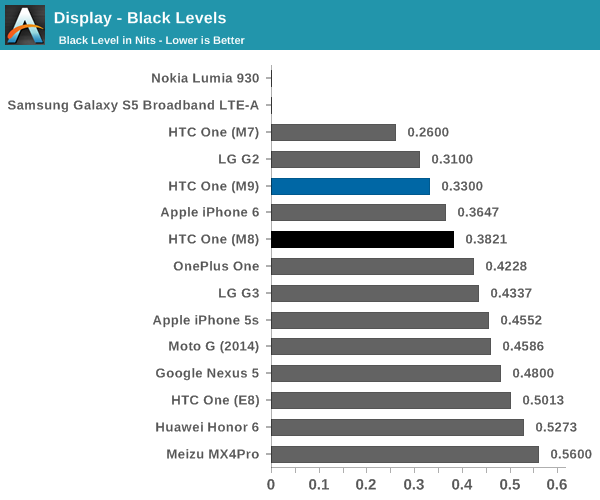
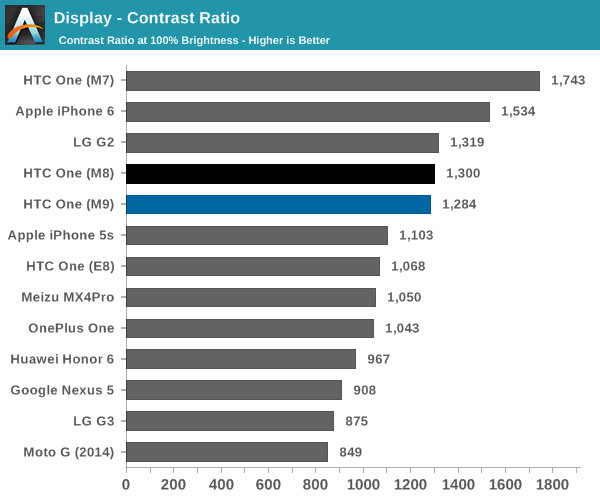
Our first test is focused on some of the basic aspects of the display, namely brightness and contrast. In this regard, the M9 seems to effectively identical to the M8. Both have some level of content-adaptive backlight control, which means that static contrast is lower than the value that we’ve tested it for.
Outside of this basic test, I noticed that the display has worse viewing angles than the M7 and M8. Although the off-angle glow isn’t visibly different when shifting the display along the horizontal and vertical axes, anything in between dramatically decreases contrast as seen in the photos below. It’s likely that this is related to the polarizers used, as the IPS glow effect is strongly angle-dependent. In practice, this really does reduce the effective contrast of the display. The brightness of the display could be higher, but it’s likely that at this point it makes more sense to target lower reflectance with improved coatings rather than driving brightness.
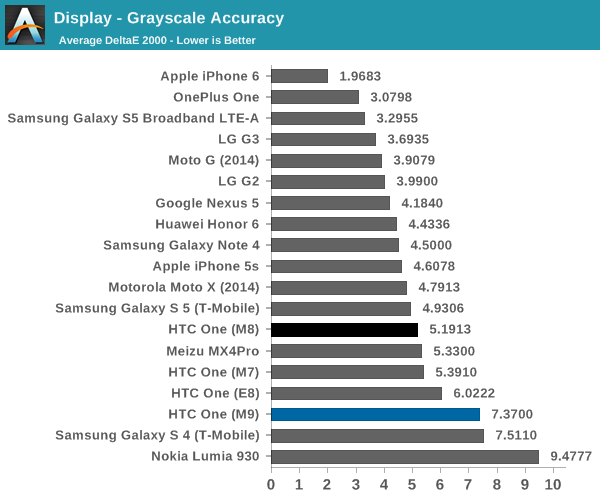
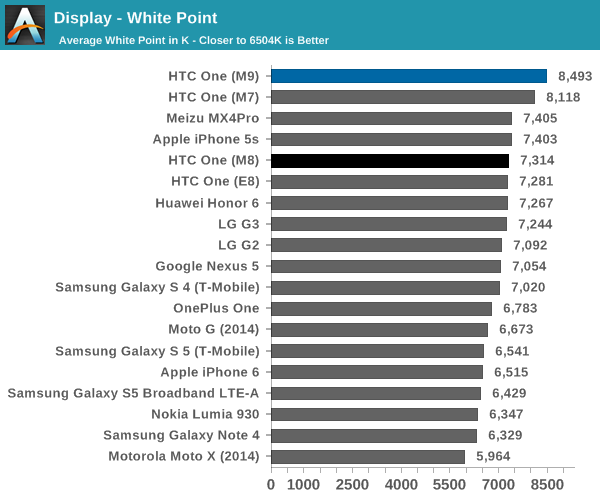
Moving on to grayscale calibration, we can see a dramatic reduction in accuracy when compared to the M7 and M8. Although gamma is generally correct, the white balance ends up far too green and blue. The next most notable issue seems to be related to CABC, as there’s a dramatic increase to gamma from 70% to 100% white. In practice, everything looks excessively cold and with a strange green tint to a lot of content, which really hurts the viewing experience. In order to get an idea for whether this is just a single point or a general trend, we can look at the saturation test which introduces multiple colors.
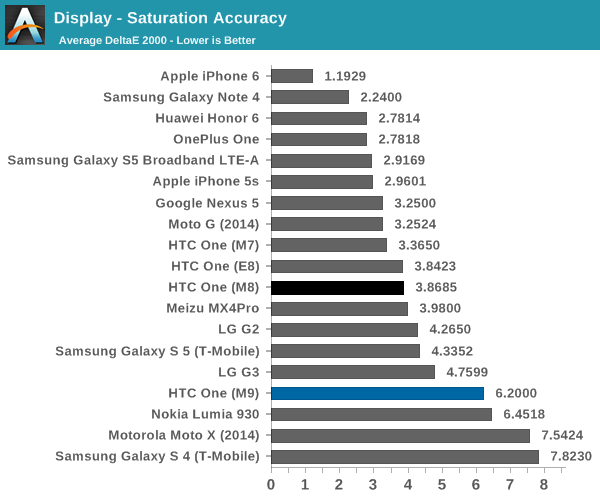

As we can see, in the saturation test this excess of green and blue in colors is not an isolated case of white balance. Colors like magenta are significantly skewed towards blue, yellow tends to skew towards green, and colors like blue and green have noticeable saturation compression. As a result, the color accuracy will be noticeably different from a monitor that follows the sRGB standard. The only positive aspect of this color calibration is that HTC has managed to constrain the gamut of the display to sRGB, unlike the M8 which noticeably exceeded sRGB.
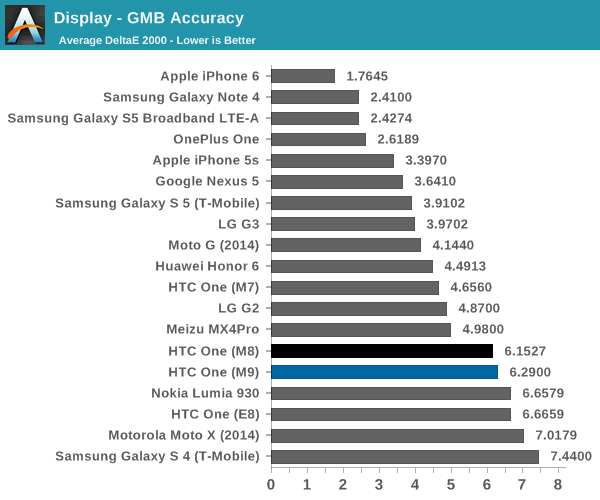
In the Gretag MacBeth ColorChecker, we can get a holistic view of color accuracy within the sRGB space which tests hue, saturation, and gamma to see display calibration as a whole. Somewhat predictably, the M9 also falls short in this scenario. Given how significant the deviations are, it would be difficult to use the M9 in any case where color accuracy is needed.
Overall, the display of the M9 is disappointing. At some point, it was clear that HTC was integrating some of the best mobile displays possible into smartphones, but starting with the M8 it seems that we’ve seen HTC slip in this area. The M9 continues this trend, which is somewhat concerning as the display of a slate smartphone tends to be a critical part of the experience. Some may be eager to point to AMOLED as an alternative, but the problem is that HTC has failed to integrate a high quality LCD into the M9. In the near future though it seems that it may make sense for HTC to move to AMOLED. However, it’s unlikely that such a move would result in any reduction of bezel size as all current displays require a display driver that must be placed directly next to the display.



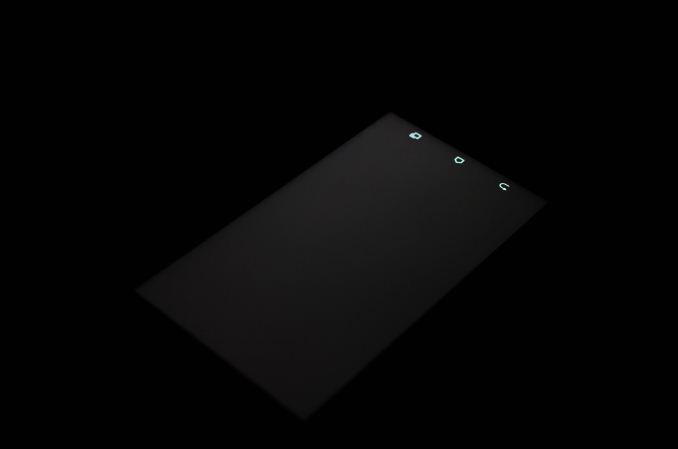
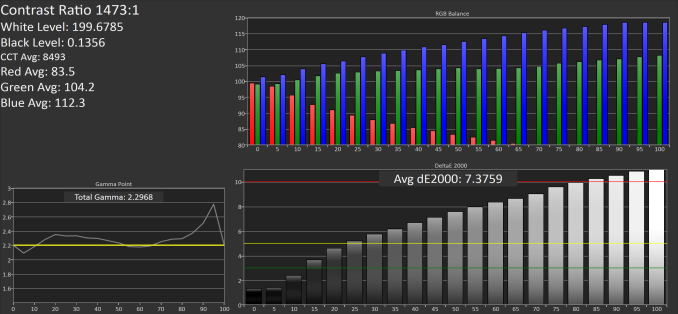
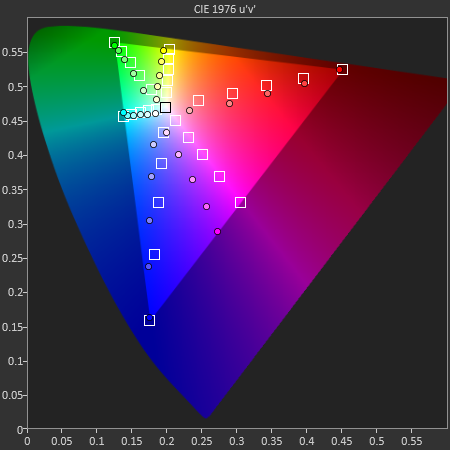
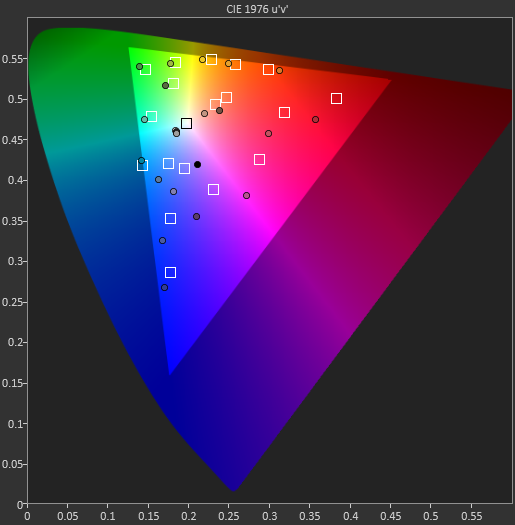








132 Comments
View All Comments
Gunbuster - Monday, March 23, 2015 - link
So let me get this right, It's practically indistinguishable from the old M8 design wise, has an under-clocked SOC, worse screen, no Qi, and they still haven't fixed the giant wasted HTC bezel space...flyingpants1 - Monday, March 23, 2015 - link
They just keep doing the same design over and over again... The metal is nice, but they should drop it IMHO.flyingpants1 - Monday, March 23, 2015 - link
In favor of wireless charging and larger battery. One Asian version of the HTC M7 HAD A 3200mah battery, but no LTE.pt2501 - Monday, March 23, 2015 - link
I think that with the recent change in software, Anandtech should be commended with releasing some review data on the HTC ONE M9 even in an incomplete state. This review might save someone who has been chomping at the bit from making a potential mistake.With that said and taking into account the disappointment with Snapdragon 810, I would ask and believe that it is about time we got a review of the Droid Turbo. It is one of the only phones to have the 805 refresh and i don't understand why such a major release for Motorola went without any review by Anandtech. I mean AT reviewed that POS Moto X but the real flagship phone went completely unnoticed. Aside from the GS6 and Sony Z3C there really are no other phones worth buying as of right now.
Please reconsider AT and review the Turbo. While the display is far from perfect, most other aspects are quite nice for the price.
SeannyB - Tuesday, March 24, 2015 - link
The Droid Turbo is made significantly less compelling by the fact that it's exclusive to Verizon, unlike the Moto X & Nexus 6. When was the last time AnandTech reviewed a Droid?DParadoxx - Monday, March 23, 2015 - link
Where is the Nexus 6 in these graphs?JoshHo - Monday, March 23, 2015 - link
Given that we have multiple S805 devices in the graphs we decided that it would be best to leave Nexus 6 results out. They can be seen in Bench or in previous reviews.hanseome - Monday, March 23, 2015 - link
I am sure that Samsung Galaxy S6 is the only phone announced with LPDDR4. I am really surprised to see HTC M9 with LPDD4.Madpacket - Monday, March 23, 2015 - link
Looks like the Note 4 is still the best Android phone. Disappointed by HTC here.Guest8 - Monday, March 23, 2015 - link
I can't believe my Nexus 5 still holds up LOL. I was thinking about getting the Zenfone 2 but 5.1 came out and fixed a lot of bugs and I am back to being happy again. My brother has the M7 I may just help him flash GPE to get 5.1 on his device and call it a day. I would love to see the Zenfone 2 in these benchmarks. I wonder if Anandtech will do a review?